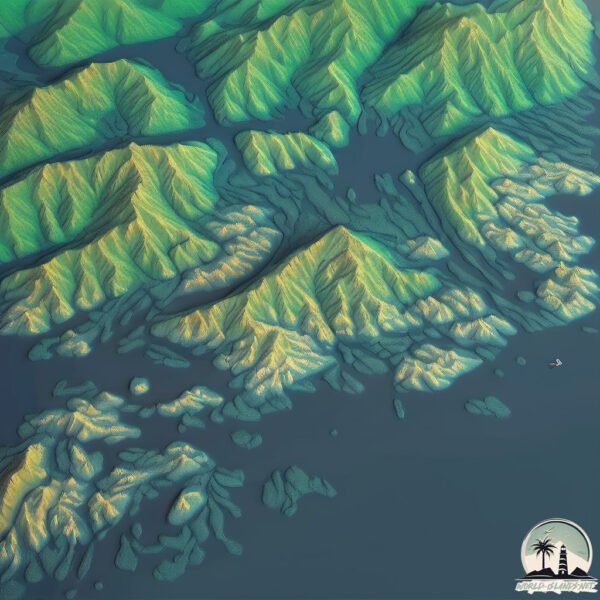Welcome to Île Bayfield , a Continental island in the Gulf of St. Lawrence, part of the majestic Atlantic Ocean. This guide offers a comprehensive overview of what makes Île Bayfield unique – from its geography and climate to its population, infrastructure, and beyond. Dive into the details:
Geography and size of Île Bayfield
Size: 21.9 km²Coastline: 42.1 kmOcean: Atlantic OceanSea: Gulf of St. LawrenceContinent: North America
Île Bayfield is a Medium Island spanning 22 km² with a coastline of 42 km.
Archipel: –
Tectonic Plate: North America – Covers North America and parts of the Atlantic and Arctic Oceans, characterized by diverse geological features and varying levels of seismic activity.
The geographic heart of the island is pinpointed at these coordinates:
Climate and weather of Île Bayfield
Climate Zone: ContinentalClimate Details: Subarctic ClimateTemperature: Cold Summer
Climate Characteristics: Characterized by long, extremely cold winters and short, cool summers, often found in northern latitudes of North America and Eurasia.
Topography and nature of Île Bayfield
Timezone: UTC-04:00Timezone places: America/La_PazMax. Elevation: 35 m Mean Elevation: 16 mVegetation: WetlandTree Coverage: 29%
The mean elevation is 16 m. The highest elevation on the island reaches approximately 35 meters above sea level. The island is characterized by Plains: Flat, low-lying lands characterized by a maximum elevation of up to 200 meters. On islands, plains are typically coastal lowlands or central flat areas.
Dominating Vegetation: Wetland
Vegetation: 8 vegetation zones – Very Highly Diverse Island
Infrastructure and Travelling to Île Bayfield
Does the island have a public airport? no .
Does the island have a major port? no .
The mean population of Île Bayfield is 0 per km². Île Bayfield is Uninhabited. The island belongs to Canada .
Continuing your journey, Île du Forgeron is the next notable island, situated merely km away.
Discovering Bayfield, Wisconsin/ Apostle Island/ Big Bay State Park/Madeline Island
Country Pilgrim takes you to Bayfield, Wisconsin where we explore Lake Superior and the Apostle Islands National Seashore, ...
Discovering Bayfield, Wisconsin/ Apostle Island/ Big Bay State Park/Madeline Island
Country Pilgrim takes you to Bayfield, Wisconsin where we explore Lake ...
Country Pilgrim takes you to Bayfield, Wisconsin where we explore Lake Superior and the Apostle Islands National Seashore, ...
02 26 18 Ice Highway Madeline Island To Bayfield By Drone
02-26-18 I flew my drone from Madeline Island to Bayfield and back. A ...
02-26-18 I flew my drone from Madeline Island to Bayfield and back. A good video for someone that is afraid to drive on the ice.
Bayfield to Madeline Island Ferry
ferry #lakesuperior #southshore #wisconsin #travel #transit #slowtv.
ferry #lakesuperior #southshore #wisconsin #travel #transit #slowtv.
Canada is classified as Developed region: G7: Group of Seven – Major advanced economies, including Canada, France, Germany, Italy, Japan, the United Kingdom, and the United States. The level of income is High income: OECD.
News – Latest Updates and Headlines from Île Bayfield
Stay informed with the most recent news and important headlines from Île Bayfield. Here’s a roundup of the latest developments.
Loading...
Please note: The data used here has been primarily extracted from satellite readings. Deviations from exact values may occur, particularly regarding the height of elevations and population density. Land area and coastline measurements refer to average values at mean high tide.

